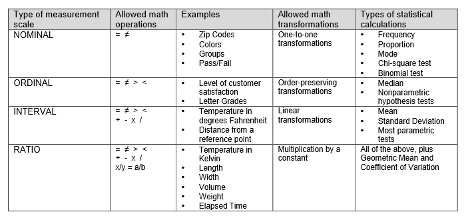Correlation is a fundamental concept in statistics that measures the strength and direction of the relationship between two variables. For first-year media students, understanding correlation is crucial for analyzing data trends and making informed decisions. This essay will explore two common correlation coefficients: Pearson’s r and Spearman’s rho.
Pearson’s Correlation Coefficient (r)
Pearson’s r is used to measure the linear relationship between two continuous variables. It ranges from -1 to +1, where:
- +1 indicates a perfect positive linear relationship
- 0 indicates no linear relationship
- -1 indicates a perfect negative linear relationship
The formula for Pearson’s r is:
$$r = \frac{\sum_{i=1}^{n} (x_i – \bar{x})(y_i – \bar{y})}{\sqrt{\sum_{i=1}^{n} (x_i – \bar{x})^2 \sum_{i=1}^{n} (y_i – \bar{y})^2}}$$
Where:
- $$x_i$$ and $$y_i$$ are individual values
- $$\bar{x}$$ and $$\bar{y}$$ are the means of x and y
Example: A media researcher wants to investigate the relationship between the number of social media posts and engagement rates. They collect data from 50 social media campaigns and calculate Pearson’s r to be 0.75. This indicates a strong positive linear relationship between the number of posts and engagement rates.
Spearman’s Rank Correlation Coefficient (ρ)
Spearman’s rho is used when data is ordinal or does not meet the assumptions for Pearson’s r. It measures the strength and direction of the monotonic relationship between two variables.
The formula for Spearman’s rho is:
$$\rho = 1 – \frac{6 \sum d_i^2}{n(n^2 – 1)}$$
Where:
- $$d_i$$ is the difference between the ranks of corresponding values
- n is the number of pairs of values
Example: A researcher wants to study the relationship between a TV show’s IMDB rating and its viewership ranking. They use Spearman’s rho because the data is ordinal. A calculated ρ of 0.85 would indicate a strong positive monotonic relationship between IMDB ratings and viewership rankings.
Significance and Significance Level
When interpreting correlation coefficients, it’s crucial to consider their statistical significance[1]. The significance of a correlation tells us whether the observed relationship is likely to exist in the population or if it could have occurred by chance in our sample.
To test for significance, we typically use a hypothesis test:
- Null Hypothesis (H0): ρ = 0 (no correlation in the population)
- Alternative Hypothesis (Ha): ρ ≠ 0 (correlation exists in the population)
The significance level (α) is the threshold we use to make our decision. Commonly, α = 0.05 is used[3]. If the p-value of our test is less than α, we reject the null hypothesis and conclude that the correlation is statistically significant[4].
For example, if we calculate a Pearson’s r of 0.75 with a p-value of 0.001, we would conclude that there is a statistically significant strong positive correlation between our variables, as 0.001 < 0.05.
Understanding correlation and its significance is essential for media students to interpret research findings, analyze trends, and make data-driven decisions in their future careers.
The Pearson correlation coefficient (r) is a measure of the strength and direction of the linear relationship between two continuous variables. Here’s how to interpret the results:
Strength of Correlation
The absolute value of r indicates the strength of the relationship:
- 0.00 – 0.19: Very weak correlation
- 0.20 – 0.39: Weak correlation
- 0.40 – 0.59: Moderate correlation
- 0.60 – 0.79: Strong correlation
- 0.80 – 1.00: Very strong correlation
Direction of Correlation
The sign of r indicates the direction of the relationship:
- Positive r: As one variable increases, the other tends to increase
- Negative r: As one variable increases, the other tends to decrease
Interpretation Examples
- r = 0.85: Very strong positive correlation
- r = -0.62: Strong negative correlation
- r = 0.15: Very weak positive correlation
- r = 0: No linear correlation
Coefficient of Determination
The square of r (r²) represents the proportion of variance in one variable that can be explained by the other variable[2].
Statistical Significance
To determine if the correlation is statistically significant:
- Set a significance level (α), typically 0.05
- Calculate the p-value
- If p-value < α, the correlation is statistically significant
A statistically significant correlation suggests that the relationship observed in the sample likely exists in the population[4].
Remember that correlation does not imply causation, and Pearson’s r only measures linear relationships. Always visualize your data with a scatterplot to check for non-linear patterns[3].
Citations:
[1] https://statistics.laerd.com/statistical-guides/pearson-correlation-coefficient-statistical-guide.php
[2] https://sites.education.miami.edu/statsu/2020/09/22/how-to-interpret-correlation-coefficient-r/
[3] https://statisticsbyjim.com/basics/correlations/
[4] https://towardsdatascience.com/eveything-you-need-to-know-about-interpreting-correlations-2c485841c0b8?gi=5c69d367a0fc
[5] https://datatab.net/tutorial/pearson-correlation
[6] https://stats.oarc.ucla.edu/spss/output/correlation/
[super_web_share type=”inline” color=”#2271b1″ text=”Share” icon=”share-icon-1″ style=”default” size=”large” align=”start” ]
